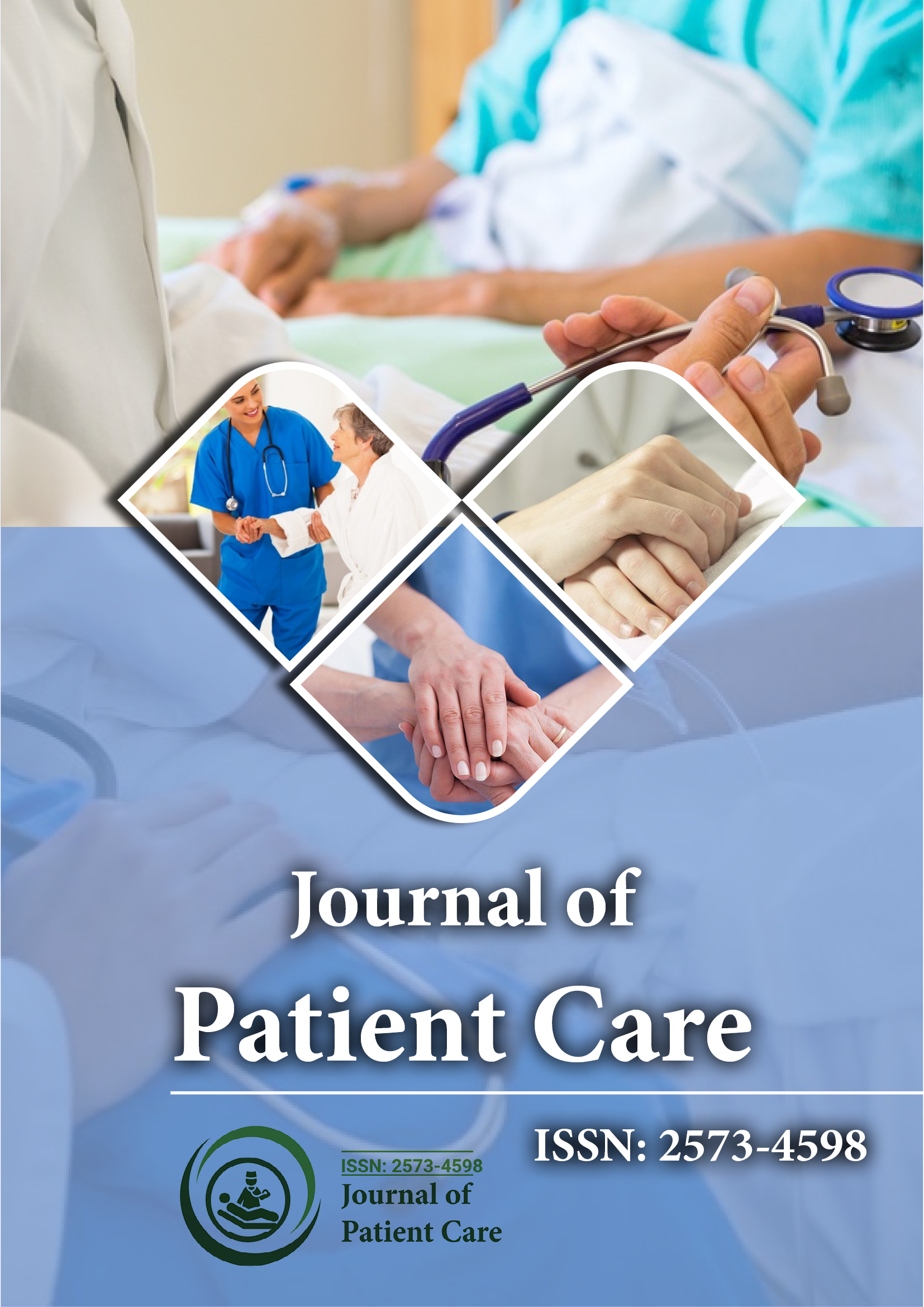Indexed In
- RefSeek
- Hamdard University
- EBSCO A-Z
- Publons
- Geneva Foundation for Medical Education and Research
- Euro Pub
- Google Scholar
Useful Links
Share This Page
Journal Flyer

Open Access Journals
- Agri and Aquaculture
- Biochemistry
- Bioinformatics & Systems Biology
- Business & Management
- Chemistry
- Clinical Sciences
- Engineering
- Food & Nutrition
- General Science
- Genetics & Molecular Biology
- Immunology & Microbiology
- Medical Sciences
- Neuroscience & Psychology
- Nursing & Health Care
- Pharmaceutical Sciences
Perspective - (2023) Volume 9, Issue 6
Patient Safety and its Impact on Healthcare Outcomes
Witter Ohlsson*Received: 04-Oct-2023, Manuscript No. JPC-23-24410; Editor assigned: 06-Oct-2023, Pre QC No. JPC-23-24410(PQ); Reviewed: 23-Oct-2023, QC No. JPC-23-24410; Revised: 30-Oct-2023, Manuscript No. JPC-23-24410(R); Published: 06-Nov-2023, DOI: 10.35248/2573-4598.23.9.265
Description
Patient safety is a acute component of healthcare delivery that directly impacts the well-being and outcomes of patients. It encompasses a wide range of practices and protocols aimed at preventing harm to patients while receiving medical care. The importance of patient safety cannot be enhanced, as medical errors and preventable adverse events can lead to serious consequences, including injury or even death. Patient safety is defined as the prevention of errors and adverse effects to patients associated with healthcare. It involves the identification, analysis, and prevention of errors that can lead to harm during the process of providing healthcare. Patient safety extends beyond medical errors and includes aspects like infection control, medication safety, and the overall well-being of patients throughout their healthcare journey. The most valid reason for prioritizing patient safety is the human cost of medical errors. Errors in healthcare can lead to serious injuries, disabilities, and even loss of life. Every patient's health is important, and ensuring their safety should be the fundamental goal of healthcare providers. In addition to the human cost, medical errors have a significant economic impact.
The cost of treating errors, including extended hospital stays and additional medical procedures, can be considerable. Furthermore, healthcare providers may face legal outcomes, including malpractice lawsuits, which can lead to substantial financial losses. Patient safety is closely tied to an institution's reputation and the trust patients place in it. Hospitals and healthcare facilities that prioritize patient safety are more likely to earn the trust of their communities and engage both patients and talented healthcare professionals. Modern healthcare systems are incredibly complex, involving numerous processes, professionals, and technologies. This complexity increases the likelihood of errors occurring, as there are more opportunities for miscommunication or mistakes to happen. There is often a lack of standardization in healthcare practices, which can lead to variations in care and the potential for errors. Establishing standardized protocols and guidelines can help diminish this challenge. Effective communication among healthcare professionals is acute for patient safety. Miscommunication or lack of information sharing can lead to errors in diagnosis, treatment, and medication administration. Healthcare professionals often work long hours under high-stress conditions, which can lead to fatigue and burnout. Fatigued healthcare workers are more prone to making errors, focusing the need for strategies to address this issue. Healthcare organizations can implement quality improvement initiatives to identify and address areas of concern related to patient safety.
These initiatives may involve continuous monitoring of processes, analyzing data, and making necessary improvements. Proper training and education for healthcare professionals are essential. Continuous learning and development can improve their knowledge and skills, reducing the likelihood of errors. The integration of technology and automation in healthcare can enhance patient safety. Electronic health records, barcode medication administration systems, and automated alerts for drug interactions are examples of technological solutions that can prevent errors. Encouraging a culture of open reporting of errors without fear of severe measures is acute. Healthcare organizations can learn from mistakes and put measures in place to prevent similar errors in the future. Doctors, nurses, pharmacists, and other healthcare professionals play a central role in ensuring patient safety. They are responsible for delivering care in accordance with best practices and guidelines. Patients and their families can actively participate in their own safety by asking questions, understanding their treatment plans, and reporting any concerns or discrepancies. Hospitals and healthcare facilities have a responsibility to create a culture of safety, provide resources for training and technology, and establish policies that prioritize patient safety. Government agencies and policymakers can enact regulations and standards that promote patient safety. They can also conduct inspections and reviews to ensure compliance.
Artificial Intelligence (AI) can be used to predict and prevent adverse events in healthcare. Machine learning algorithms can analyze patient data to identify patterns that may lead to errors and provide early warnings. The expansion of tele health and remote monitoring can improve patient safety by allowing healthcare professionals to monitor patients in their homes, reducing the risk of hospital-acquired infections and other complications. Improving the interoperability of health information systems can enhance communication among healthcare providers and reduce the risk of errors related to incomplete or inaccurate information. Empowering patients to take an active role in their healthcare through digital tools and education can contribute to better outcomes and safer care.
Conclusion
Patient safety is a fundamental aspect of healthcare that directly impacts the well-being of patients. While significant progress has been made in recognizing its importance and implementing strategies to enhance it, challenges continue. The ongoing activity of patient safety requires a collaborative effort from healthcare providers, patients, policymakers, and technology innovators. By addressing the challenges and embracing emerging technologies and strategies, we can continue to improve patient safety and provide the highest quality care possible in healthcare settings.
Citation: Ohlsson W (2023) Patient Safety and its Impact on Healthcare Outcomes. J Pat Care. 9:265.
Copyright: © 2023 Ohlsson W. This is an open-access article distributed under the terms of the Creative Commons Attribution License, which permits unrestricted use, distribution, and reproduction in any medium, provided the original author and source are credited.
